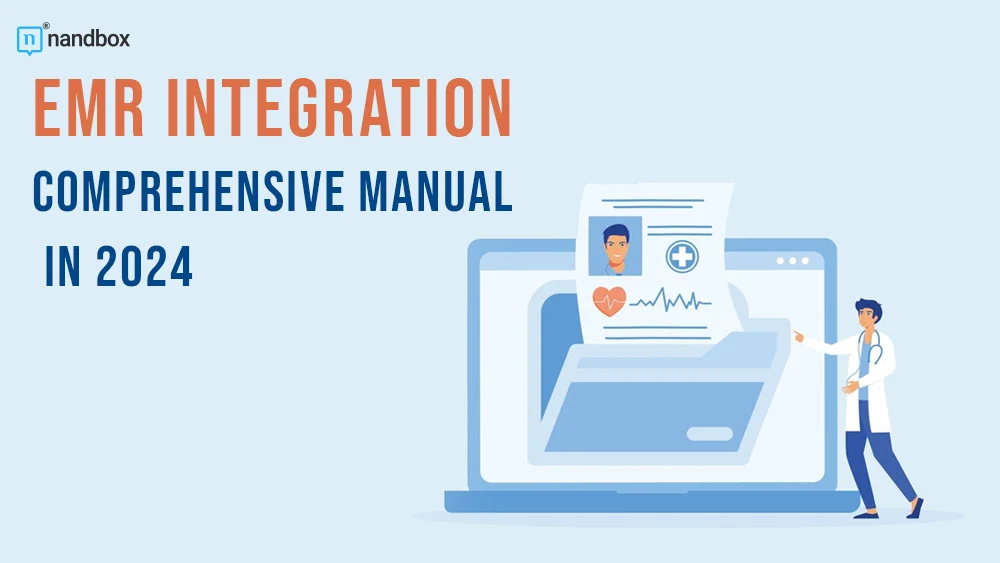With the introduction of electronic medical records, hospitals entered a new age of healthcare procedures. This created a wealth of options for holistic treatment and assisted the healthcare sector in identifying inadequacies in care delivery.
EMR software has taken center stage in virtual healthcare, offering individualized treatment, data-driven practices, and a comprehensive picture of a patient’s medical journey. For this reason, most other healthcare professionals are attempting to switch to EMR software.
EMR Integration: What Is It?
First, let’s address this fundamental topic: What does EMR stand for before we go into EMR integration?
As the name implies, electronic medical records are the digital equivalent of all the essential medical data typically found in a traditional paper-based or doctor-based chart, including the patient’s medical history, the doctor’s notes, diagnoses, test results, allergies, immunization records, and prescriptions.
Conversely, frictionless information exchange across organizations is made possible via EMR system integration. Connecting your EMR platform to other devices or systems creates a more seamless communication flow.
To provide you with a better perspective, EMR connectivity enables you to quickly and easily communicate pertinent patient data with a hospital or other healthcare provider. Medical records do not need to be sent in hard copy form.
What Kind of Practices Use EMR Systems?
EMR systems are widely used in healthcare offices; therefore, selecting the right one for your specialty is crucial. Numerous EMR systems include many software modules designed to support different specializations. Certain medical device software development provides for customization, allowing you to better match your platform to the requirements of your practice.
Specialty modules include, for example:
Dental EMRs
Dental clinics using EMRs need to integrate complicated technologies. Periodontal charting and notation templates streamline dentists’, hygienists’, and other team members’ workflows for tooth extraction, endodontics, orthodontics, and other fields. By integrating equipment, imaging, and anesthesia, dentists can better manage patient data.
EMRs for Family Practices
Family medicine covers a wide range of medical specialties underneath. EMR for family practices should include a thorough template library so that doctors may record information on cardiac care, respiratory ailments, pediatric or geriatric medicine, and other specialties.
Referral linkage, a lab interface, self-updating embedded code, and strong administrative connectivity to simplify operations throughout the practice are helpful.
Ophthalmologist`s EMRs
Ophthalmologists need an Electronic Medical Record (EMR) that works with devices used for vision testing, such as autorefractors, keratometers, and visual field machines. Ophthalmologists mostly depend on clinical documentation and gather a lot of patient data. The greatest software for ophthalmologists and their practices is one that makes data gathering and documentation easier.
For example, an EMR for ophthalmology should include dashboards specifically made for the specialty, self-updating incorporated ICD-10 codes, and record templates for various eye disorders.
Five Steps to a Successful Integration of EMRs
Now that you know what an EMR is, it’s important to learn how the integration process works. This knowledge will help you choose a good service provider.
Organizing
All employees are questioned to establish goals, and the company’s requirements are examined. Team spirit increases when every employee takes part in goal planning.
Creating
At this point, efficiency and unique design are the main priorities. The system design has to optimize efficiency, meet the practice’s needs, and be user-friendly. The system’s flow is mapped out in blueprint form.
Construction
The integration system receives all of the data that the practice has gathered. File formats are transformed, and the practice selects the data collection that will be useful moving forward.
Testing
Before the system goes online, quality, dependability, backups, emergency redundancy measures, potential situations, and security processes should be examined.
Implementation
After the EMR connection, the program is tested to ensure stability and security. It needs to meet national certification criteria and be HIPPA compliant. The personnel receive technical training on system usage and troubleshooting. Regular security improvements and upgrades are crucial.
Top Techniques for Integrating EMRs
Healthcare companies should adhere to best practices to guarantee the success of EMR integration, from including stakeholders to continuing monitoring and assessment.
Initiate the planning process by including all stakeholders at an early stage. Give your employees plenty of prior notice about the EMR integration rollout date, what they can do to be ready, and allow any follow-up questions they may have.
Next, create open and objective governance guidelines. These might include acceptable levels of quality, consistency, accuracy, and protocols for processing and storing data.
Thirdly, depending on variables like cost, scalability, and customization, choose the integration approach that best suits their requirements. As previously indicated, the three kinds of integrations available are standard, bespoke, and hybrid.
Finally, businesses should routinely assess and monitor the integration to spot problems and make corrections. Additionally, they need to gather user feedback to ensure that the integration is fulfilling consumers’ requirements.
Conclusion
EMR integration is essential for modern healthcare procedures. It facilitates improved patient care, increased efficiency, and streamlined processes. However, integration is a difficult undertaking requiring technical expertise and legal compliance. Healthcare workers may easily handle EMR integrations, guaranteeing seamless interoperability and maximizing the advantages of digital health technology by adhering to the insights and methods provided in this guide.




